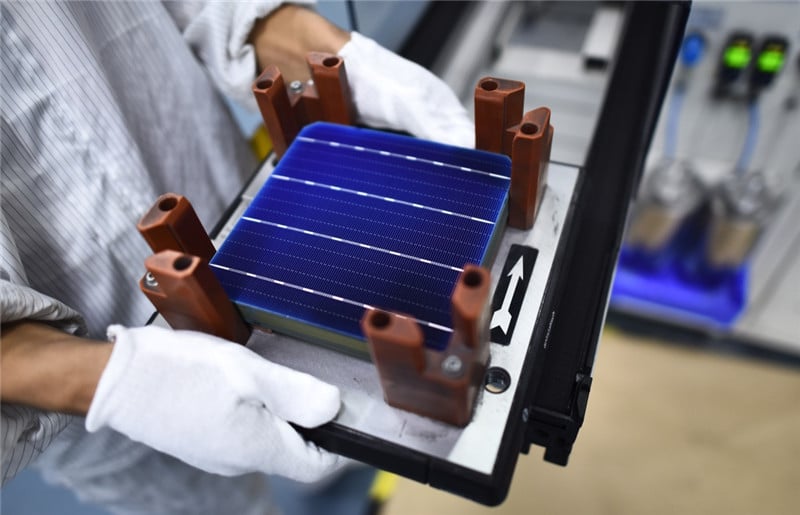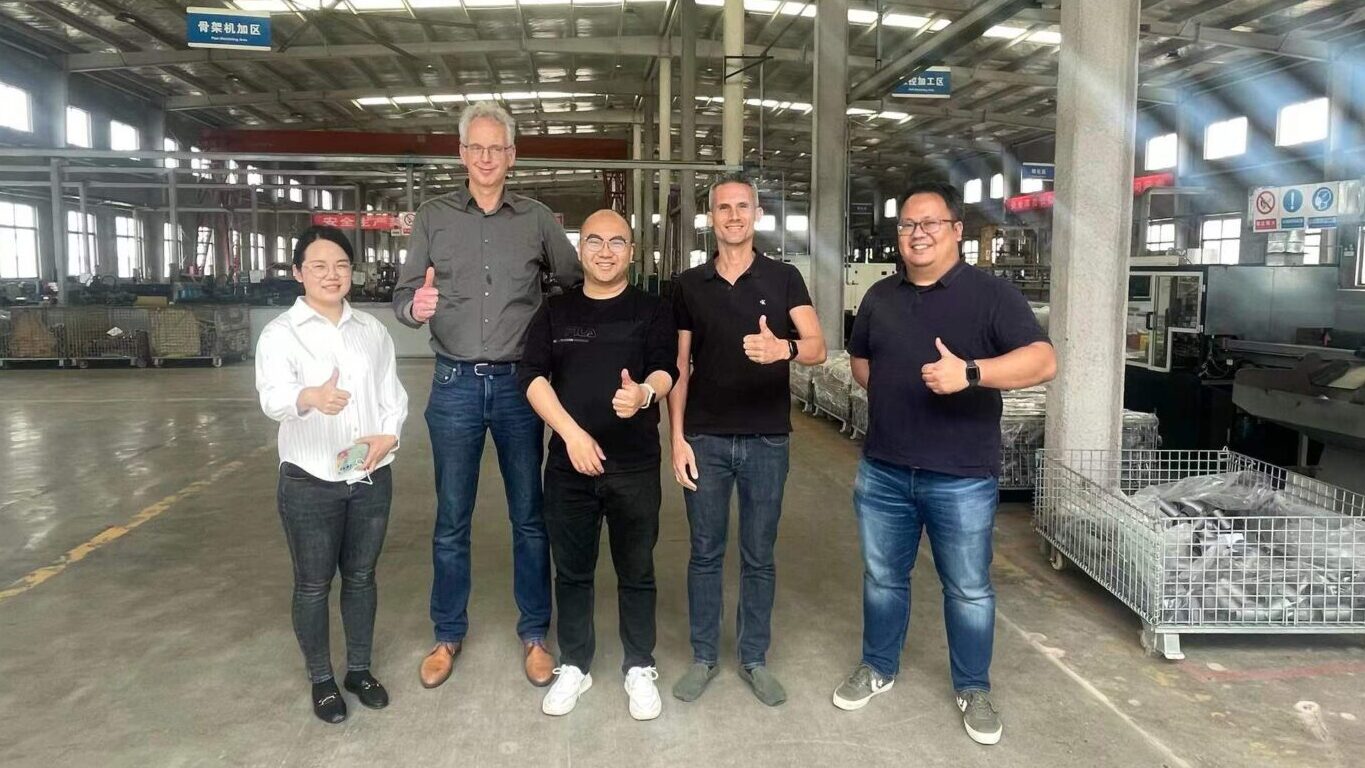When designing a custom solar system, one of the decisions you usually need to make is whether to use a micro inverter or a string inverter. The type of inverter you choose affects the cost, efficienza, and monitoring capabilities of your solar system. This article will introduce you to the basics of string inverters and micro inverters, so that you can choose the solar system that is best for you.

Micro inverter vs inverter di stringa
Whether they are micro-inverters or string inverters, they all have the basic function of an inverter, which is to convert direct current (DC) generato dai pannelli solari in corrente alternata (AC) to power your home.
In questo articolo, we will delve into two common inverter types: micro inverters and string inverters. We’ll cover the basic concepts and how each works to help you better understand how solar systems work.
What are Micro Inverters and How Do They Work?
Micro inverters are smaller and more flexible than traditional centralized inverters and are typically installed on the back of each solar panel. Micro inverters operate at the panel level, maximizing energy collection for each panel.
Inoltre, micro inverters provide enhanced system monitoring and optimization capabilities, they provide real-time data on the performance of each solar panel, enabling timely detection and diagnosis of problems to ensure maximum performance of the solar system.
It is worth noting that the installation cost of micro inverters is generally higher, but it is a key part of getting the maximum energy from a system with unique specifications.
When sunlight hits, the solar panel generates direct current, which is sent to a micro inverter connected to the panel. The micro inverter first receives direct current from the solar panels and converts it into alternating current electricity via electronics inside. The AC energy is then transferred to the home or commercial grid for use in the home or for sale to the grid.
Inoltre, through the additional monitoring function provided by the micro inverter, the performance information of each solar panel can be monitored in real time, including energy output, voltaggio, and statistics on any possible problems or failures for effective maintenance and troubleshooting.
Micro Inverter Pros and Cons
| Pro | Contro |
| individual panel optimization | maximizing overall energy production |
| allow owners to track the performance of each panel in real-time | complex installation |
| increased safety | more parts to maintain and repair |
| scalability and expandability | may not be compatible with all solar panels or systems |
| maximizing overall energy production |
What are String Inverters and How Do They Work?
String inverters are often used in solar projects and are the simplest and lowest cost option. String inverters are sequentially connected to multiple solar panels, forming a string of panels, and are connected via a single series to a large inverter installed next to a home utility meter, unlike the micro inverters installed on each solar panel.
String inverters are typically used in larger-scale solar systems where multiple solar panels need to be connected together to meet greater energy demands. String inverters convert total energy according to the lowest performing panel, so all panels operate at a similar level to maintain optimal output.
But compared with micro inverters, the main disadvantage of string inverters is that when one of the solar panels receives a shadow or fails, the performance of the entire series circuit will be affected.
String inverters are usually located in a central location, near the main electrical service panel, and first receive direct current energy from the series solar panel group, converting it into AC electricity through the electronic components inside.
The conversion process of a string inverter has several stages, including transformers, switching power supplies and output circuits, to ensure the effective conversion of electrical energy and stable output.
String inverters can handle more power than micro inverters because they can be used with many panels. Tuttavia, in order to maintain optimal performance and safety, it is critical to ensure that the total power output of the panels in the string does not exceed this threshold.
In solar installations with string inverters, the inverters produce alternating current that is synchronized with the grid or used to power electrical equipment within the building. Depending on how the system is connected to the grid, excess power can be output or net metering used, in which case the energy generated by the solar panels will be returned to the grid.
String Inverter Pros and Cons
| Pro | Contro |
| costo più basso | shading impact |
| simplified installation | lack of monitoring granularity |
| are compatible with a wide range of solar panels and systems | lowest performing panel dictates output for the entire array |
| less parts to monitor | warranty is typically shorter than for microinverters |

The Differences Between Micro Inverters vs String Inverters
Functionality
From the functional point of view of micro inverters and string inverters.
Micro inverters are classified as modular power electronics for the conversion of electrical energy from a single solar panel, enabling the solar panel to independently convert the direct current energy it generates into usable AC electrical energy.
String inverters are used to process solar energy from multiple panels at the same time, also known as central inverters, converting direct current energy after multiple solar panels are connected in series into AC power.
Connection Method
Each solar panel is connected to a micro inverter, and each inverter individually converts the direct current energy generated by the corresponding solar panel. The string inverter is a series of solar panels together to form a circuit, and then connected to a string inverter, and then the inverter converts the direct current energy of the entire panel group.
Misurare
Micro inverters are typically smaller than string inverters and typically run hidden on the bottom of solar panels in a prominent position below the roof array. Due to the small size, the weight is usually light and easy to handle and install.
Inverter a stringa, due to the need to handle the conversion of electrical energy from multiple solar panels, are usually larger than micro inverters to accommodate more electronic components and radiators. And they must be installed in a well-ventilated outdoor area, further away from the solar panel set. Due to the larger size, the weight is usually heavier and requires more manpower and equipment to install and move.
Efficienza
Since each solar panel requires a micro inverter, the total cost of the system may increase, but the efficiency and reliability of the system can be improved. Since only one inverter is required to handle the electrical energy conversion of the entire array of panels, string inverters may be more economical, but micro inverters are often seen as a more efficient technology, given the limitations of string inverters’ execution in some unique situations.
Under conditions of full sunlight, studies have shown no performance advantage between the two. Tuttavia, under shadow conditions, the total power output of the solar panel group may be significantly reduced, because the output of the individual solar panels connected to the string inverter may be limited by the lowest performing panel in each string.
Life Expectancy
The life expectancy and warranty period of the purchased micro inverters and string inverters can be extended by 20 anni o più. Tuttavia, the average life of most string inverters is about 10 anni, while micro inverters can typically last 15-25 anni, which means that string inverters are more likely to need to be replaced during the lifetime of a solar system.
Manutenzione
For micro inverters, less maintenance is usually required because they are relatively simple in design and do not have large internal components. But the maintenance side of the system is more complicated, with component changes often requiring contact with rooftop solar arrays, which can involve workers temporarily uninstalling the panels on which the component is installed.
Because string inverters are usually installed outdoors or in sun-exposed environments, more frequent maintenance may be required, but replacing string inverters is usually a seamless process that rarely requires excessive time or labor.
Although modern micro inverters are very reliable, the number of devices (i.e., 16 micro inverters and 1 string inverter) makes them really more prone to failure and temporary system downtime.
Cost and Value
Micro inverters are generally more expensive than string inverters, and even when a power optimizer is added to a string inverter, a micro inverter system can still be more expensive. Despite the high initial investment, micro inverters can provide higher system performance and reliability and are optimized at the inverter level, resulting in increased energy output.
String inverters are generally less expensive than micro inverters because they can connect multiple solar panels and one inverter can serve multiple panels.
Tuttavia, when considering the long-term value, the cost and return on investment of the micro inverter can be higher, and if the sting inverter is replaced midway through the life of the panel, then the new string inverter outside the warranty period will increase the total cost of the system.
Flexibility and Monitoring
Since each solar panel is equipped with a micro inverter, each panel can be independently monitored and managed, thus increasing the flexibility and efficiency of the system.
Because in a string inverter, the electrical energy conversion of the entire group of panels is handled by a single inverter, the performance of the entire group can only be monitored and managed, and there is a lack of fine control of a single panel.
Conclusione
Alla fine, whether you choose a micro inverter or a string inverter should depend on the specifics of your solar system installation. Whether it’s the shape of the roof, the space on the house or the condition of the shadows, you can work directly with a solar expert to determine the best type of inverter for your needs, including a string inverter (with or without a power optimizer) or the perfect combination of a micro inverter with solar panels.
GYCX Solar si impegna a fornire ai clienti una serie completa di soluzioni per sistemi solari. Il nostro team di professionisti personalizzerà la soluzione solare in base alle vostre esigenze e alle condizioni del sito. Contact GYCX Solar and let us help you find the best solar solution.

FAQ
Is a micro inverter better than a string inverter?
Micro inverters and string inverters each have their advantages and limitations, so which is better depends on your specific needs and situation. Micro inverters are suitable for situations that require better partial shadow management and mode-level monitoring, while string inverters may be more suitable for situations where costs are more sensitive and there are no shadow issues. The best choice should be based on factors such as your roof shape, shadow condition, budget, and need for performance monitoring.
Is a micro inverter worth it?
Although everyone’s investment will be different, micro inverters are often worth it for home solar systems. Tuttavia, they are often more expensive, so determining whether a micro inverter is worth it depends on your specific needs, budget, e progettazione del sistema.
Is string Inverter worth it?
String inverters can be very worthwhile in some cases, they are often more affordable than micro inverters, suitable for shadow-free solar systems, and easy to install and maintain. Tuttavia, string inverters still have some limitations, such as a single point of failure can affect the performance of the entire system, and the inability to handle partial shading. Perciò, when deciding whether a string inverter is worth choosing, you need to consider your specific needs, budget, and system configuration.
